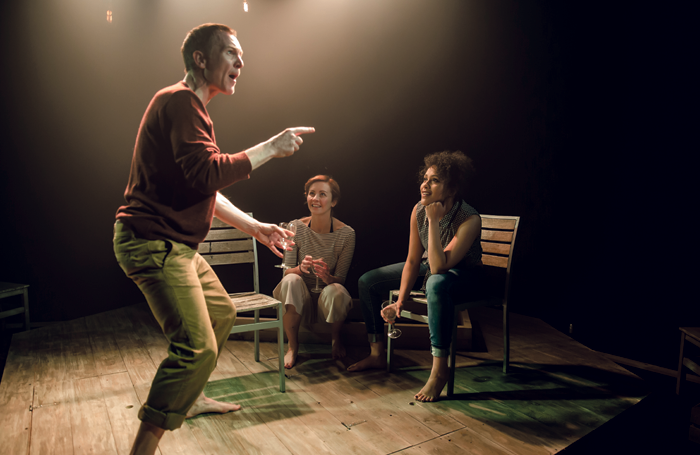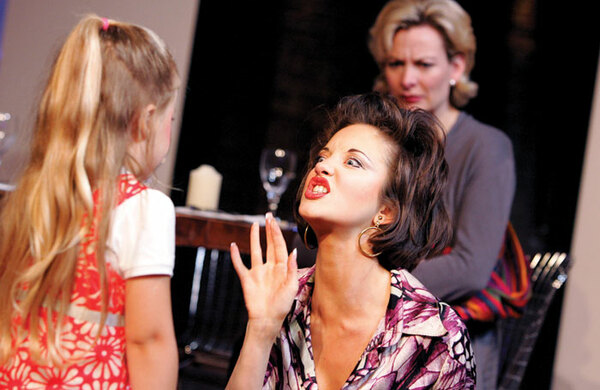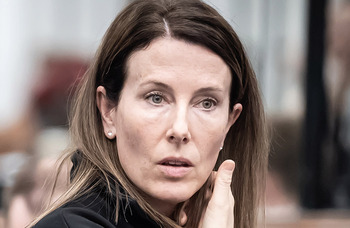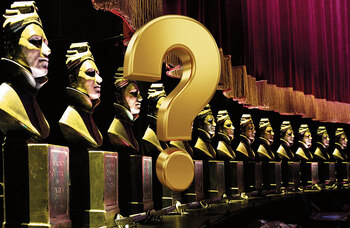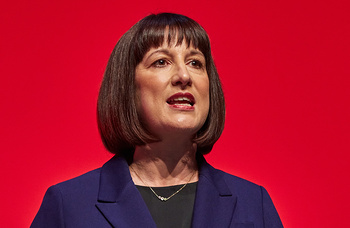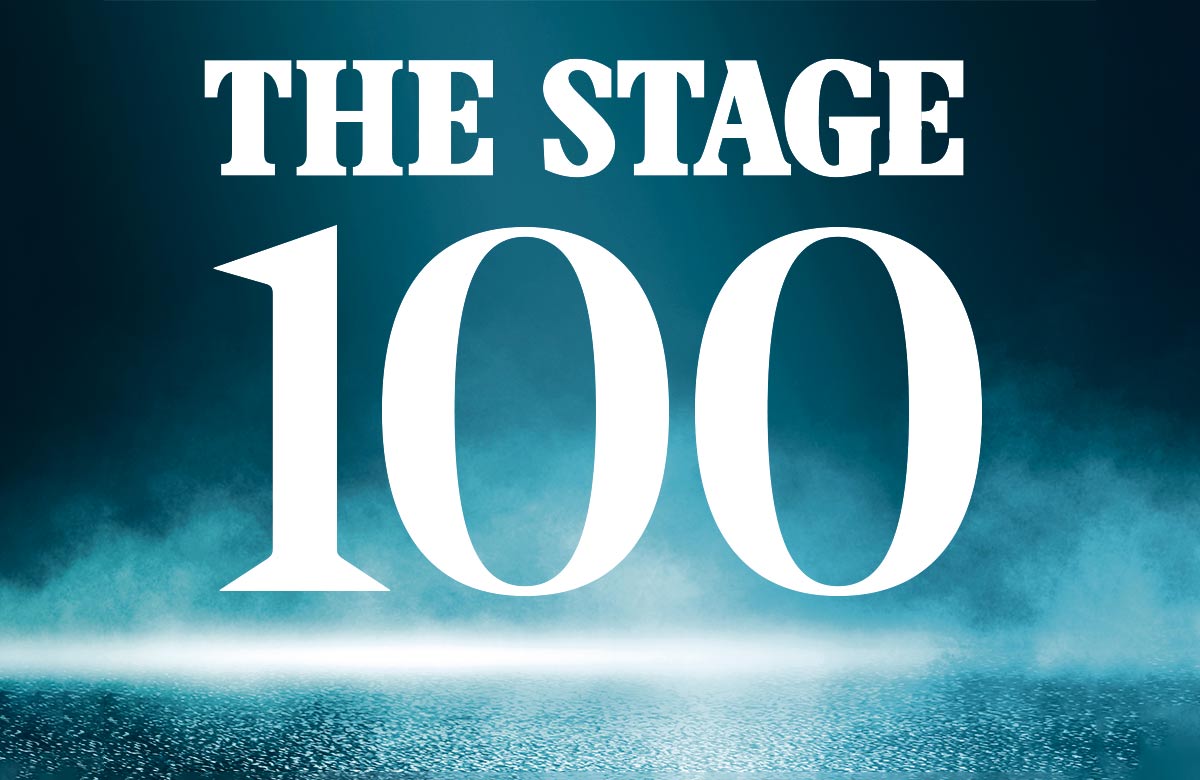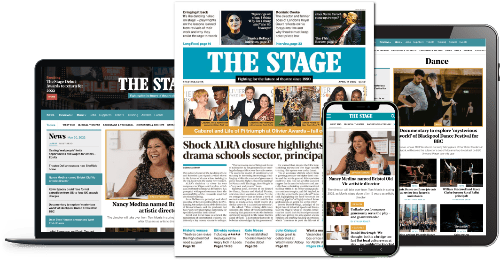Lyn Gardner: Is British theatre guilty of failing the working class?
Critics accuse the sector of becoming increasingly dominated by middle-class sensibilities, neglecting the tastes of many in favour of ‘high art’. Working-class theatremakers tell Lyn Gardner how they are striving to bring about change by founding campaign groups, engaging communities and producing ambitious shows
Emma Rice, the outgoing artistic director of Shakespeare’s Globe, was asked in a recent radio interview whether her abrupt departure was down to her being a woman. “It’s possibly more to do with class than gender,” she responded. “I got two A levels and went to a comprehensive school in Nottingham.” If Rice’s working-class background really was one of the factors that led to the breakdown of her relationship with the Globe board, what does it say about British theatre and its attitude to class?
Emma Rice: ’My working-class background was a barrier at the Globe’
Diversity remains a hot topic in theatre, and discussion is finally leading to long-overdue action. Theatres are proactively gender-balancing their seasons – or are being shamed into it – establishing initiatives to bring in people from black, Asian and minority ethnic backgrounds. They are also overseeing a rise in the number of disabled people appearing on stages around the country.
But is class structure the unaddressed issue of British theatre? Should we be looking beyond the glass ceilings of race and gender to the class ceiling that keeps theatre predominantly middle-class? Theatres often have policies in place and collect data regarding race and gender but not for the socio-economic background of would-be employees and artists – or, indeed, audiences.
Earlier this month, playwright Sabrina Mahfouz wrote that she was always asked about obstacles faced as a woman in the arts and sometimes as a BAME woman. “Never am I asked about class,” she said on Twitter. “This is the biggest obstacle imo [in my opinion] in UK theatre right now.”
The Labour Party’s Acting Up report, published last summer, found the arts are “increasingly dominated by a narrow set of people from well-off backgrounds” leading to a “C-shaped hole”, something that high-profile actors from Julie Walters to Christopher Eccleston have been increasingly vocal about.
They are not the only ones to have noticed. The Sutton Trust published research in 2016 that showed 42% of British BAFTA winners attended fee-paying schools when only 7% of the population is privately educated, while Warwick Commission research found that the wealthiest, best educated and least ethnically diverse 8% of the population is the most culturally active.
Class divide still matters
“It’s a myth that class is not an issue in this country,” says London artist Scottee, whose recent shows include Bravado – about working-class masculinity – and Working-Class Dinner Party, which will be staged at Camden People’s Theatre in April as part of Common People, a festival of work made by artists who all identify as working-class. “Class is an issue in theatre, which is largely run by an elite for an elite, and it’s my job as an artist and troublemaker to try to change that.”
Over the next two years, Scottee will dedicate his practice to the ‘C’ word. Last year, he, Bryony Kimmings and Selina Thompson came together to set up the Working-Class Artists Group on WhatsApp and Twitter. The group is growing fast, and will shortly produce a manifesto that aims to make British theatre think about class bias, make it accountable and improve the visibility of working-class artists.

It is badly needed. Just before Christmas, production company Zebedee saw nothing offensive in mounting an East End-themed immersive theatre supper experience called The Cockney’tivity in a Homerton pub, charging £55 a ticket.
“That kind of appropriation of working-class culture is why working-class artists need to find each other and push forward,” says Scottee. “Why hasn’t class been part of the arts diversity debate? Why isn’t there a wider range of voices being heard? People like my parents also pay taxes that go to the arts, so they should have a say in the arts.”
It was the absence of working-class voices in theatre and the lack of acknowledgement of the challenges faced by working-class theatremakers that led director David Loumgair, who recently revived Abi Morgan’s Tiny Dynamite at the Old Red Lion, to set up Common last year. Common hopes to do for class in British theatre what Tonic has done for gender. It has just been announced as an associate company with English Touring Theatre and aims, like Tonic, to support the industry to make change.
Common arose out of Loumgair’s own frustration at the way class was excluded from the diversity debate and the barriers he has encountered in his attempts to build a career as a director.
“Unless you can afford to do a master’s degree – which I can’t – or have the family support that allows you to work unpaid, it’s almost impossible to build the levels of experience needed to get those assistant director positions that theatres offer,” he says.
“It’s an unspoken thing in the industry that you do unpaid work that builds you networks and relationships with venues, and eventually you start to get low-paid opportunities. The unpaid work and those low-paid jobs might lead to better opportunities, but they might not. And if you come from a working-class background, the potential rewards don’t marry up with the potential risks because you have no financial safety nets.”
Those safety nets are crucial to advancement. Many working in theatre, particularly if they are freelance, are low paid and are part of a precarious and expanding group: those without job or income security.
When you come from a working-class family, the chances are there will be no one to call up if you can’t make the rent that month
But as Rebecca Atkinson-Lord, whose production The Class Project is touring this spring, says: “The difference between your situation if you are from a middle-class or working-class background is that if you come from a working-class family, the chances are there will be no one to call up if you can’t make the rent that month.
The Class Project review at Summerhall, Edinburgh – ‘thought-provoking exploration of class’
“There are so many barriers to entry in this profession and it’s all the harder if at every meeting you are there because you really need the job, however meagre the remuneration, because you have got to pay the rent, not because one day you might like to run the National Theatre and you think it will help you on your way. It means that at the meeting or interview you are maybe that bit more shrill and desperate.”
It also means that many from working-class backgrounds give up the struggle to work in the arts before their careers have even got going.
Lack of opportunities
Academic Sam Friedman is examining who gets to the top in professions from accountancy to acting in his book The Class Ceiling, written with Daniel Laurison, to be published later this year. He outlines how the lack of opportunities – or simply a narrower stratum of opportunities for working-class actors – result in unsustainable careers.
“Those who get to stay on the tightrope are the ones who get to make sustainable careers. But working-class actors are less likely to be cast in middle-class roles than their middle-class counterparts. And there are more middle-class roles and they are often bigger roles,” he says.
“Those from working-class backgrounds often get typecast as working-class characters who are not only often caricatured and offensive, but are often also secondary roles and therefore less well-remunerated.”
How someone speaks is one of the markers for class, so it’s perhaps not surprising that some working-class artists find it easier to try to fit in by coding and putting on what Scottee calls “the arts version of yourself” when meeting commissioners and programmers who are predominantly middle-class.
“I code extremely well. I deserve an Olivier for the performance of my life, not the work I make,” says Atkinson-Lord, whose painful, moving and often very funny show is about how she lost her real voice when a scholarship to a private school left her belonging neither in the working-class culture of the rest of her family or comfortable in the middle class.

Not having a voice or feeling insecure or an imposter in the middle-class milieu of theatre was a constant refrain from the working-class artists interviewed for this piece.
“I bring my upbringing with me,” says Rhiannon White, who grew up on a council estate in Wales and has gone on to found Common Wealth, a company that works with working-class communities to enable them to tell their stories in shows. These include Our Glass House, about domestic violence, and We’re Still Here, created with National Theatre Wales and Port Talbot steel workers.
We’re Still Here review at Byass Works, Port Talbot – ‘powerfully moving’
White’s project Class: The Elephant in the Room at Chapter Arts in Cardiff also examined the failure of theatre to acknowledge the class issue. “If you work in theatre and are constantly surrounded by people who went to private school and Oxbridge you start feeling inadequate as if you don’t have anything to bring to the table.”
Middle-class taste-makers
Hassan Mahamdallie, an arts policy maker and trainer specialising in diversity, who was the author of Arts Council England’s The Creative Case for Diversity, is not surprised that class has been overlooked and under-considered in the arts. He says that one of the reasons it has not been tackled can be traced to arts policy shortly after the Second World War and with the establishment of the Arts Council in 1946.
When public subsidy was set up, it quickly became dominated by the middle classes, who set the agenda for taste – the working class was marginalised
“When public subsidy was set up it very quickly became dominated by the middle classes and it was the middle classes who set the agenda for taste. That meant that the working class was marginalised in terms of what kinds of art were seen to be valid and should be funded,” Mahamdallie says.
He argues that this “hidden hand of the taste-makers” has shaped and promoted the funding and distribution of art considered to be valid, and marginalised other forms: so opera has a higher status than ballroom dancing.
As a result, not only is the rich cultural identity of large swathes of the population simply overlooked, but they are deemed to be under-engaged in the arts.
This leads to funded initiatives by theatres and arts organisations to lure those they are under-serving into their buildings in a way that Scottee suggests can be a form of “coercion”. Free tickets and coaches are laid on to bring people to a building where they feel uncomfortable. A sandwich costs £5 and the image of themselves they see reflected back is one filtered through a middle-class sensibility.

“What does it say to you when you are always the kid in the room on a concession pass?” asks White. “I think what it says is that this world of theatre is not really for you.”
Atkinson-Lord puts it bluntly: “We, as a broadly middle-class arts community, don’t really want working-class people to engage with the arts on their own terms. We want them to engage with the arts in order to make them become more like us; we want them to learn to be quiet and observe the social rules around behaviour and dress.
“We want them to engage in intellectual ‘high art’ that speaks to the traditional ideals of the upper classes in the hope that through some bright lights and pretty costumes we’ll be able to trick them into bettering themselves.”
She goes on to say: “If we really wanted more of the white, working class in our theatres we’d be making work that bounced off the sorts of stuff they do flock to engage with: gaming, epic visceral drama, big narratives, sex, violence, death and adrenaline; familiarity, recurring characters, comfortable methods of access, the fairytale, the pantomime, the big and bold and tribal and gut-wrenching. But we don’t. We revive Chekhov in translations by David Hare. We do not want working-class people as they are, so we do not really want them at all.”
This insidious taste-making also affects working-class representation on stage, with working-class artists sometimes feeling that they have to propose and make the work that funders and commissioners want.
We make the shows that the funders want to fund and theatres want to programme and often they are poverty tourism for the middle-class audience
“I often wonder why middle-class audiences want to pay to hear me tell stories about working-class life,” says Scottee. “And why is it that so seldom we are funded to tell the stories of working-class success? More often the dominant narrative is about working-class failure. We make the shows that the funders want to fund and theatres want to programme and often they are poverty tourism for the middle-class audience.”
Funding grassroots theatre
White believes that the problem is not just the stories being told, but the ethics of what happens when theatremakers descend on socially and economically disadvantaged communities to deliver well-funded projects.
“When we go into communities we need to ask what it is we will leave behind. What is the legacy? If there isn’t one for the people living in that community and no long-term benefit it’s a form of cultural appropriation.”
Tony Blair may have thought that class was no longer an issue in 21st-century Britain, but the increasing gap between rich and poor – and studies showing the demise in social mobility over the last 40 years – all point to the fact that the UK is more divided by class than ever.
Brexit and events such as the Grenfell Tower fire highlight the growing gulfs between the haves and have-nots and throw a spotlight on the inequalities in society that close down pathways and block access to the opportunities and jobs that the middle class take for granted.
This is the same for art and culture that the middle classes take for granted and which they shape and define. The introduction of the EBacc and the disappearance of arts subjects in school further deprives young people from accessing the arts.
As Kully Thiarai, now artistic director of National Theatre Wales, observed on the opening of Cast in Doncaster in 2013: “I do not believe there is a lack of creative potential or ambition in the town’s people, merely an untapped and invisible voice needing an opportunity to be unleashed.”
The rise of initiatives such as the Working-Class Artists Group and Common point to the fact that increasing numbers of artists are proudly self-identifying as working-class and determined to bring about change. But Mahamdallie thinks that it won’t be easy because historically so much power was invested in the current structures exemplified by big buildings that gobble up so much of the funding.
Indeed, all of us in the arts have seen how the progress of diversity initiatives in theatre is often painfully slow when big arts organisations are left to implement them. Why should working-class artists find it any easier to push the doors of access wide open than artists of colour or women?
Mahamdallie argues that the only way to bring about real change is not just to fund big theatres to implement policies but to siphon off some of the money and resources locked up in those institutions directly to young people at the grassroots and working-class communities to build their own arts organisations.
It’s a radical solution and one that arts funders and institutions are unlikely to embrace because it would require a willingness to give up power, influence and taste-making. As Mahamdallie says: “If you started to distribute art according to socio-economic equality, you would overturn the entire structure of the arts and how it is run.”
Now there’s a thought.
More information: cptheatre.co.uk; commontheatre.co.uk; rebeccaatkinsonlord.co.uk; commonwealththeatre.co.uk
Opinion
Recommended for you
Opinion
Recommended for you
Most Read
Across The Stage this weekYour subscription helps ensure our journalism can continue
Invest in The Stage today with a subscription starting at just £7.99
